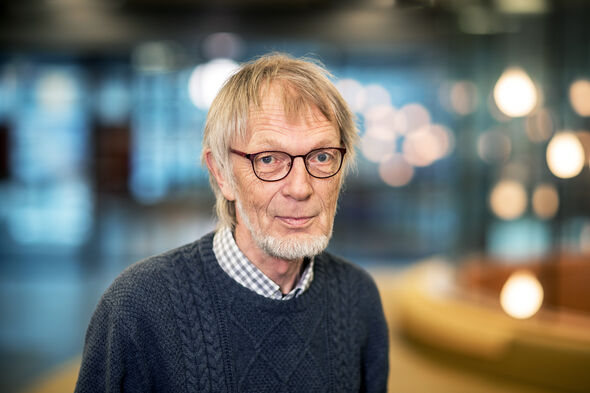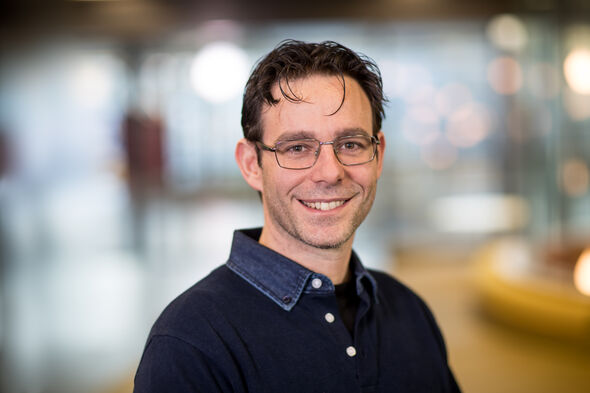Prof Talk | Using microbubbles to detect cancer
It was stressed repeatedly on World Cancer Day last week: the diagnosis and treatment of cancer have changed radically in recent years. The same can be said of the detection of prostate cancer. Now, starting this month, men with a questionable blood value will receive an MRI scan to localize any tumors in advance of the usual biopsy procedure. TU/e professor Massimo Mischi hopes to further improve this process with CUDI, the ultrasound technique he has developed, and he is also keen to work on breast cancer screening.
Until recently, in a likely case of prostate cancer - the cancer most common among men in the Netherlands - the next step after a positive blood test was a biopsy. A painful procedure in which prostate tissue is removed from twelve random sites via the anus. This month hospitals started working with a new guideline that requires that first an MRI scan be taken. This information will give the doctor performing the biopsy a target, which will mean more first-time-right needlesticks and fewer complications.
“Technology is improving the situation for patient and doctor; less uncertainty, more precision,” agrees Massimo Mischi, professor of Signal Processing Systems at the Department of Electrical Engineering.
But the media have been painting too rosy a picture, point out Mischi and his colleague Hessel Wijkstra, part-time professor at TU/e and head of Urological Research at UMC Amsterdam. “We are now getting patients coming to us who think that systematic biopsies are no longer necessary if the MRI scan finds nothing suspicious,” says Wijkstra. “A huge misconception, very unfortunate. An MRI doesn't give a watertight guarantee and that is why, as European guidelines stipulate, we still need biopsies to arrive at the correct diagnosis. Accurately localizing tumors is another matter and here the MRI adds value, no doubt about it.”
CUDI
Years ago the technique developed by Mischi’s group, Contrast Ultrasound Dispersion Imaging or CUDI, was also in the news. Tiny bubbles injected with a contrast agent allow Mischi, armed with an ultrasound device, to reveal any tumors in the prostate. It will be in hospitals within a couple of years, predicted the headlines of many Dutch newspapers at the time.
Although time has passed - “this has involved so much more than just the scientific development” -, Mischi is still very positive, and with good reason. “CUDI is a very fine technique, and it is faster and cheaper than MRI. For a good ten years now we have been working closely with UMC Amsterdam, and in a recent patient study we demonstrated that our method has a prostate tumor detection rate similar to that of an MRI scan. Using an ERC grant that we've just received, we are now going to take the technique from the lab to the hospital, and to do this we have founded Angiogenesis Analytics, our own startup. It would also be great if we could go on to combine CUDI and MRI, and bring detection and precision biopsy to an even higher level.”
Detecting breast cancer
With applications in the field of prostate cancer now at an advanced stage, Mischi is keen to investigate how CUDI can be used to improve the detection of breast cancer. After all, in terms of patient friendliness, the current method, which involves pressing the breast flat with a weight varying from fifteen to twenty kilos to facilitate the mammogram, leaves a lot to be desired. “Together with researchers at Radboud University we have ambitious plans to explore whether we can use CUDI to gain accurate images of breast tumors and establish how aggressive the tumor is.”
This is likely because a tumor's aggression, like localization and form, is an area that the injected microbubbles can shed light on. The microbubbles flow with the blood and their tiny dimensions enable them to reach the narrowest of blood vessels. As tumors larger than 2-3 millimeter need extra nutrition, they create their own intricate network of blood vessels, often different in form. Microbubbles in these tiny, newly made blood vessels - a process called angiogenesis - light up the tumor. The more tiny blood vessels, the faster the tumor can grow and can form metastases.
Mischi: “Not all tumors require treatment; some prostate tumors grow so slowly, for example, that ongoing monitoring is sufficient. But you certainly want to know the risk of metastases. The formation of blood vessels, which we can measure with CUDI, gives a good indication.”
Improving the cancer patient's chances of survival starts right back at the diagnosis stage, Mischi stresses. “The sooner you make the diagnosis, the sooner treatment can start. Unfortunately cancer is complex, but we are getting better and better at visualizing this complexity. Using our ultrasound technique, we can already measure multiple parameters and can employ machine learning. I know it doesn't always seem like it to patients, but technological development in the field of cancer detection is moving rapidly at the moment.”
![[Translate to English:]](/fileadmin/_processed_/6/0/csm_BvOF_2011_0106_FK_-_SonoVue_microbubbels_2321a53ec9.jpg)



Discussion